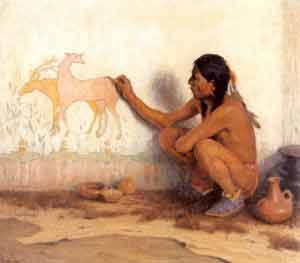"Begin at the beginning,", the King said, very gravely,
"and go on till you come to the end: then stop” – Said by the King
to the White Rabbit
(from Lewis Carroll’s, Alice In Wonderland)
Human beings are different from other animals in a very special way. This is because their chief form of communication involves storytelling. People love to tell stories, we do this all the time, although most of us may not be aware of it. When we wake up in the morning and tell our family and friends of what dream we had, we tell a story. When we are late for an appointment and have to communicate to the manager the reason, we tell a story. When something funny or scary happens to us we want to tell others about it, and we do this in story form.
 |
| People love sharing stories |
Storytelling is a very unique ability which only Homo sapiens are endowed with. We have never, for example come across a cow relating her problems or communicating a dilemma to another cow (although it would be interesting to see that). When we meet a friend, we begin by asking, “How are you doing” and the friend depending on the situation she is in, replies either that she is doing fine, or relates to you the problem she is facing; this as opposed to asking a friend, “Emotional status” and the friend replying, “Problematic”; now that would be unnatural. The reason storytelling has been our primary means of communication is because it involves participation, language, images and action. It ignites the audience and encourages them to go on an emotional journey with the storyteller.
Early Beginnings of Storytelling
To take the advice of the King from Alice in Wonderland we begin at the very beginning.
Man began communicating through primitive spoken language thousands of years ago. It is not very difficult to imagine an ancient storyteller, perhaps freshly returned from a hunt, sitting by the campfire and eagerly relating his stories of the hunting expedition to the rest of the tribe. In course of time he picks up some coal from the fireplace and makes resemblances of animals and people on the cave walls to help tell his story.
 |
| Man drawing on a wall |
He now uses a visual aid to help describe the characters in his story. Evidence of this is the cave paintings. The oldest known cave painting is that of the Chauvet Cave, dating to around 30,000 BC. Thus was born the Visual Narrative.
 |
| Early cave painting showing a hunting scene |
People painted onto the walls of caves and canyons to tell the story of their adventures. They would tell stories of battles, hunts and culture. These stories were translated down from generation to generation, educating the tribe of ancient customs and practices.
Thus we know storytelling formed an integral aspect of human life.
In the next part we shall see why Storytelling is the chief mode of human communication...stay tuned.
Image Credits: http://www.thirdage.com/image/people-in-a-group-talking, http://library.thinkquest.org/5729/, http://caninecompany.blogspot.in/2009/08/origin-of-domestic-dog.html
For more on Storytelling and the history of storytelling:
http://www.storytellingday.net/welcome-to-storytellingday-net-best-guide.html
http://en.wikipedia.org/wiki/Storytelling
No comments:
Post a Comment